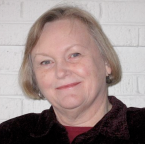Authored by Stephanie Ferrera
Dr. Jan Sapp, Professor of biology at York University in Toronto, was the guest scientist at the Center for Family Consultation’s 2015 Midwest Symposium. He kept the audience wide awake with his presentation, “Symbiotic Nature: The Ecology of Self.” Dr. Sapp is an authority on symbiosis as a force in evolution and also an authority on the history of symbiosis theory. Along with his presentation of the science of symbiosis, he told the fascinating story of the scientists who pioneered this work beginning in the late 19th century, and the controversies that followed as they discovered new data and a way of thinking that challenged key concepts in the prevailing Darwinian paradigm.
Dr. Sapp pointed out that life on earth began almost four billion years ago, but that Darwinian theory has focused on the past 500 million years, largely ignoring the preceding 3 ½ billion years during which the foundation for plant and animal life was laid at a microbial level. Symbiosis, the associations and mergers between different kinds of organisms, was the key process that led to the evolution of increasingly complex forms of life.
A fact that may challenge the way we think about ourselves is that 90% of the cells that comprise our bodies are bacterial. The eukaryotic cell that constitutes plants and animals is now understood to be the result of several symbioses. As with all animals, our cells and bodies are shared with a large number of species of bacteria and other microbes. Most of them are not the “enemy”– pathogens that cause illness–but are essential “friends” that carry out complex functions in human development, anatomy, physiology, immunity, genetics, and evolution.
What follows from this is a very different concept of the “self.” If we think of ourselves as largely autonomous individuals, the symbiotic perspective tells us: “Think again.” The billions of microbes that inhabit our bodies are living organisms in their own right: each with a genome, a life cycle, internal operations and relationships with host cells and surrounding cells. Thus, each of us is a “microbiome,” an integrated community of species. Moreover, there is considerable variation between one person’s microbiome and another, giving us a new way to think about individual differences.
Dr. Sapp’s mapping of the deep complexity of microbes and their relationships resonated with an audience of family systems theorists. He was as interested in Bowen theory as we were in symbiosis. His exchanges with Dr. Michael Kerr and the other presenters at this symposium left each and all of us with greater appreciation of “the ecology of self,” and the astounding level of systems thinking it encompasses.




Nice synopsis of Dr. Sapp’s presentation Stephanie. I also appreciated his reporting on how difficult it was for him and some of his colleagues to have their ideas, research, concepts accepted. The resistance they faced when presenting opposing theories to the scientific community reminded me of how difficult it is to differentiate from the togetherness force– for all of us. His story provided another wonderful and interesting example of how Bowen Family Systems Theory is useful and applicable in all situations.
Cecilia Guzman